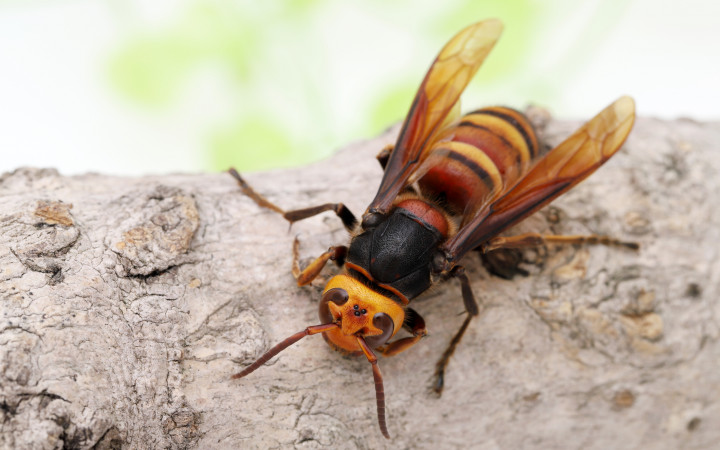Today’s Wonder of the Day was inspired by Claire. Claire Wonders, “What is a murder hornet” Thanks for WONDERing with us, Claire!
If you’ve been WONDERing with us for a while, you may have learned how bees choose their queens. You might know how mud dauber wasps build their nests. Maybe you’ve even read about how to avoid a scorpion in the desert. Today’s Wonder of the Day is all about another animal that packs a powerful sting. That’s right, we’re talking about the murder hornet!
That name may sound pretty scary. How much do humans have to fear from murder hornets? Well, their stings certainly hurt. After all, their stingers are a quarter of an inch long. They can even pierce through beekeeping gear! Unlike honeybees, they’re also able to sting more than once.
Still, most experts agree that most people have little to fear from murder hornets. That’s why they prefer to call them “Asian giant hornets.” These insects don’t attack people unless they feel threatened. Those on the receiving end of their stings still say it’s very painful. But the hornets are only a serious danger to people who are allergic to them.
Just how “giant” are the Asian giant hornets? Growing as large as two inches, they’re the largest hornets in the world. In addition to a large stinger, these insects can also bite their victims.
The scientific name for Asian giant hornets is Vespa mandarinia. It’s common to see these insects in Asia. There, they live as far north as Russia and as far south as Thailand. They are not native to North America. However, sightings of Asian giant hornets there began in late 2019.
Are you WONDERing where the nickname “murder hornet” came from? After all, these insects don’t seem to be a huge danger to human beings. It’s a different story for bees, though. It’s the Asian giant hornet’s violent attacks against honeybees in particular that earned it the nickname.
Normally, Asian giant hornets hunt alone. That changes when one comes across a beehive. They release a pheromone that attracts other murder hornets to the spot. Together, they’ll wage war against the hive. They behead bees with their mandibles. Then, they carry larvae back to their own nests for a feast.
Across Asia, bee species have learned to fight off the Asian giant hornet. When they notice the hornet’s pheromone, female worker bees prepare a counterattack. If a hornet enters the hive, the bees will swarm. They surround the hornet and beat their wings. This heats the hive and makes carbon dioxide, which eventually kills the invader.
North American bees, however, have never come across murder hornets. They don’t know how to defend themselves. This has many people worried. The honeybee population has already declined in recent years. Some fear that the Asian giant hornet could cause further harm.
How can people help protect the bees? Beekeepers can start by placing hornet traps over the entrances to beehives. They may also try putting out baited traps. These can catch Asian giant hornets before they reach the hive. In Asia, some beekeepers even hire people to fight off the hornets with tennis rackets.
How would you protect a beehive against the Asian giant hornet? Have you had an encounter with one? If you see this insect, be sure to keep your distance! While their stings are not deadly for most people, they are very painful.
Standards: NGSS.LS1.A, NGSS.LS1.C, NGSS.LS1.D, NGSS.LS2.D, NGSS.LS4.C, NGSS.LS4.D, CCRA.R.4, CCRA.L.3, CCRA.L.6, CCRA.R.1, CCRA.R.2, CCRA.R.10, CCRA.SL.1, CCRA.SL.2, CCRA.W.2, CCRA.W.4, CCRA.W.7, CCRA.L.1, CCRA.L.2




